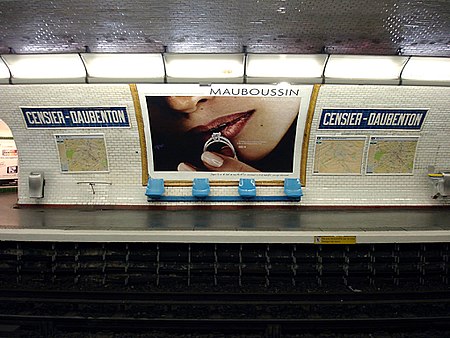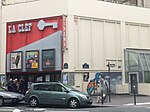Censier–Daubenton (Paris Métro)

Censier–Daubenton (French pronunciation: [sɑ̃sje dobɑ̃tɔ̃]) is a station on Line 7 of the Paris Métro. It opened on 15 February 1930 as part of a planned section of the line, which was temporarily operated as part of Line 10 until the completion of the under-Seine crossing of Line 7 from Pont de Sully to Place Monge. The station was integrated into Line 7 on 26 April 1931. It is named after the streets of Rue Censier and Rue Daubenton. Censier is the name of the locality. Louis-Jean-Marie Daubenton was a naturalist who collaborated with Georges-Louis Leclerc, Comte de Buffon on his Histoire Naturelle (French for "Natural History"). Daubenton was the first director of the nearby natural history museum, the Muséum national d'Histoire naturelle. Prior to 1965, the station was known as Censier-Daubenton halle aux cuirs. Halle aux cuirs is French for "leather market" and referred to the leather market along the Bièvre River, which is now covered in the area.
Excerpt from the Wikipedia article Censier–Daubenton (Paris Métro) (License: CC BY-SA 3.0, Authors, Images).Censier–Daubenton (Paris Métro)
Rue Monge, Paris 5th Arrondissement (Paris)
Geographical coordinates (GPS) Address External links Nearby Places Show on map
Geographical coordinates (GPS)
| Latitude | Longitude |
|---|---|
| N 48.840597 ° | E 2.351774 ° |
Address
Censier - Daubenton
Rue Monge
75005 Paris, 5th Arrondissement (Paris)
Ile-de-France, France
Open on Google Maps







